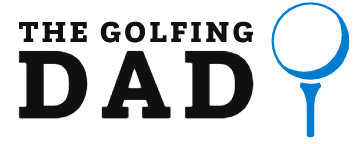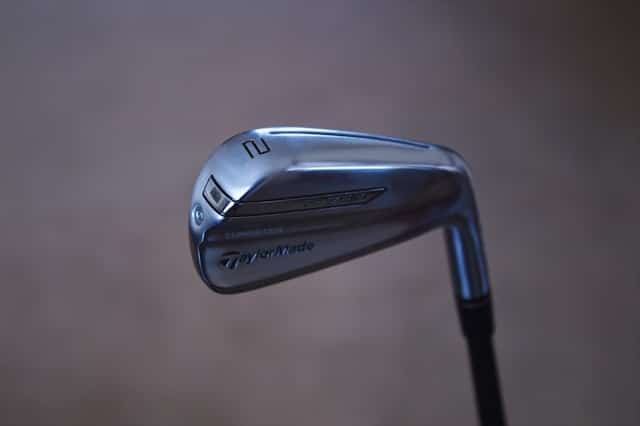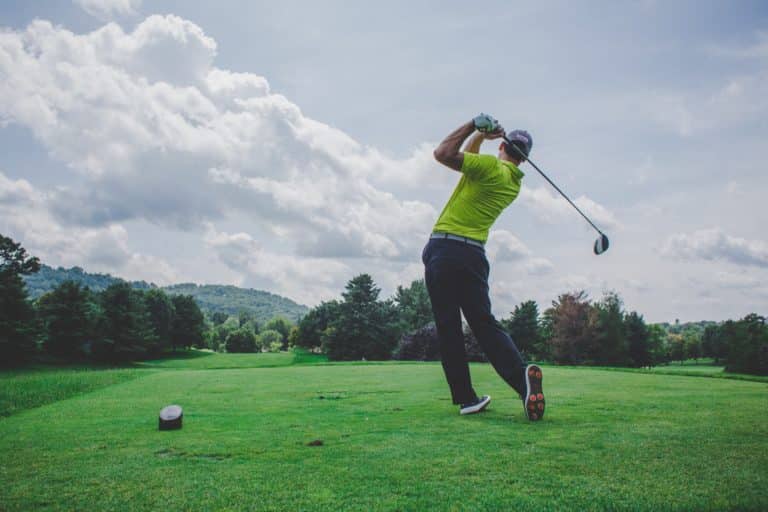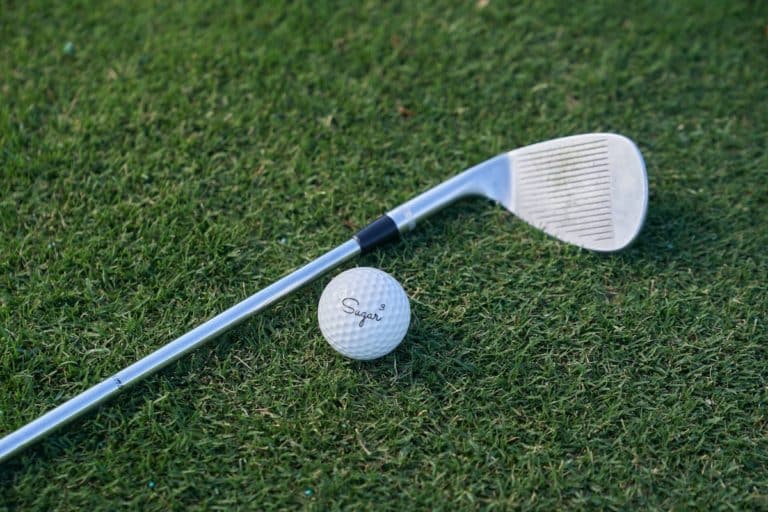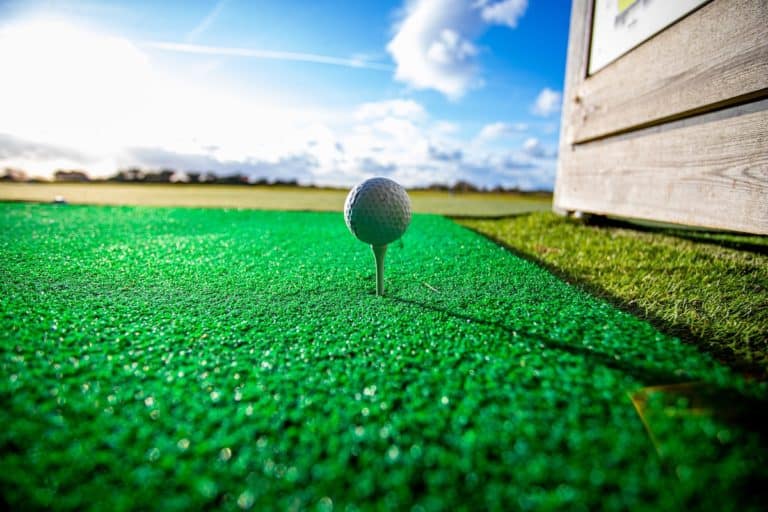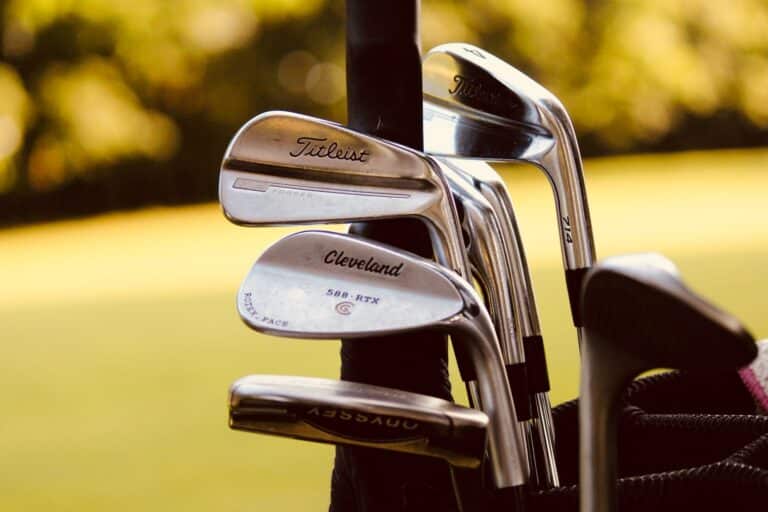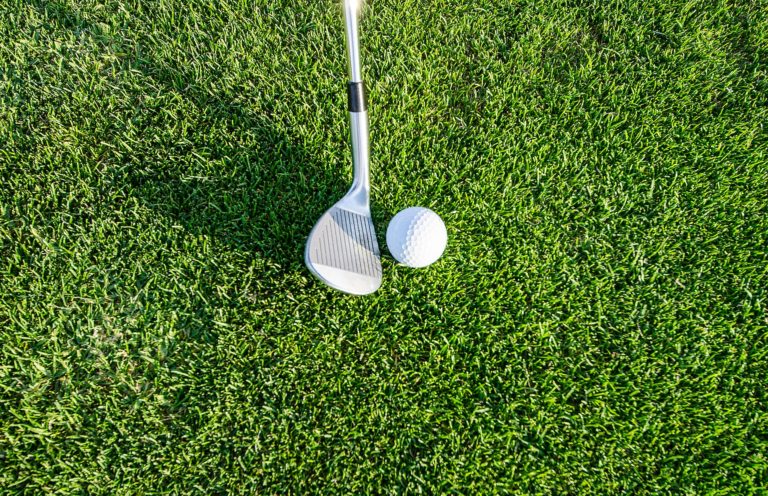Are you struggling with slicing your golf shots? If so, you’re not alone. Having a consistent and accurate golf swing is one of the most difficult aspects of the game to master. But it can make the difference in shooting 100 or breaking 80.
But don’t worry! Within this article, we’re going to look at some of the common causes of a golf slice. Plus, we’ll provide practical advice on how to fix a golf slice by adjusting your grip, stance, posture, and swing plane for optimal performance.
If you have been looking for advice on how to fix a golf slice, read on for everything you need to know.
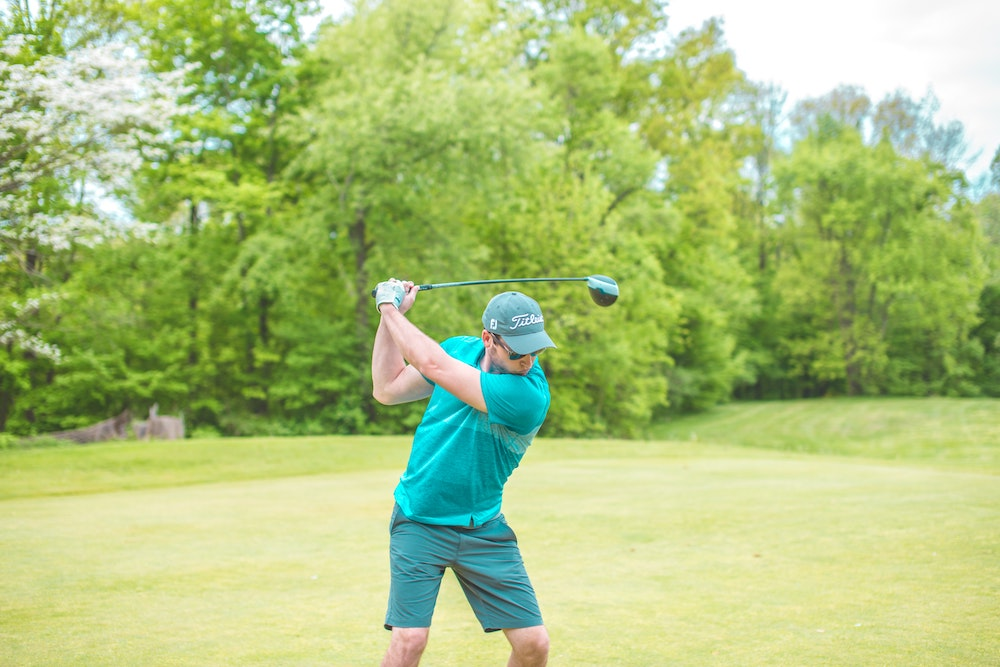
What is a slice in golf?
A slice in golf is when the ball curves in one direction instead of traveling straight toward where you’re aiming. This is typical to the right for right-handed players, and the left for left-handed players.
Usually, a slice can be more visible on long shots with a driver or fairway wood. It’s caused by what is known as “side spin”.
This happens when your swing path causes the club face to strike the ball on an angle that imparts more spin than necessary.
Why is a slice bad?
No matter how experienced you are, a slice can still affect your game in a negative way. Here are a few examples.
1. You lose distance
One of the biggest issues with hitting a slice is that it reduces the distance you can hit the ball. If your shots are shorter, especially off the tee, it can make scoring low a little challenging.
2. You can’t aim for a slice
Unlike if your typical golf shot is a slight draw, it’s very tough to aim for a slice. Most golfers can’t just set up aiming left and hope it ends up in the fairway or the green.
3. Your score will suffer
The sad truth is that both amateur golfers and pros that slice the golf ball will most likely feel the effects in their scores.
What is the biggest cause of a slice?
The main cause of a golf slice with your driver is a faulty swing path as you’re making impact with the ball.
For right-handed players, this means that the swing path is coming from outside-in which can cause the club face to be too far open at impact. This causes side spin and therefore hits shots that curve off to the right.
Why do I slice with my driver and not my irons?
The biggest reason why someone hits a slice with their driver and not with irons is the length of the clubs. Because a driver is much longer than most irons, it’s more difficult to square the face at impact. When the face of the driver comes through open, it will cause you to slice the ball.
6 Tips for how to fix a slice with a driver
So now that you have a better idea of what a slice is and what can cause it, let’s look into exactly how to fix a slice with a driver and other clubs in your bag.
1. Check your grip pressure and how you’re gripping the club
One of the biggest why someone has a golf slice is that they have the incorrect grip on the golf club. It’s important to have a light but firm golf grip whenever you swing, so it pays to be mindful of how hard you’re gripping each club. A poor grip can have a lot of negative effects on your game.
Pay close attention to how you have your grip positioned. Most golfers (right-handed) that slice the ball will have their left hand too far underneath the club. To fix this, rotate your left hand so the “V” that’s formed by your thumb and pointer finger is more on top of the club.
2. Make sure your golf ball is positioned correctly

The next thing you should do is check that your golf ball is positioned correctly in relation to the clubface. If your ball position isn’t lined up correctly, it can cause a slicing motion in your swing plane.
If you’re hitting a driver, the ball should be placed just inside your forward foot. When hitting your irons, the ball should be more toward the middle of your stance.
If you find yourself slicing the golf ball with your driver, test moving the ball position more to the right.
3. Focus on squaring the club face at impact
Your swing path plays a big part in how your ball is going to travel. Squaring the club head at impact is key to hitting straighter golf shots. So make sure that you focus on creating good swing habits whenever you’re hitting a driver or long irons.
Start by making sure that your hands are leading your swing through impact. Pay attention to how your hands move through your swing and how this affects how open or closed the club face is as you make contact with the ball.
Practice this technique with a few short iron shots before attempting it with the driver.
4. Properly transfer your weight
Weight transfer is very important in the golf swing. How you move your weight from one side to the other will affect how square the clubface is at impact.
With your driver swing, make sure that you’re transferring most of your weight to your right side (for right-handers) on that backswing. Then when you get to the top and you start your downswing and follow through, the weight should be transferred to your left side or your lead foot.
Where most high-handicap golfers struggle is they don’t completely transfer their weight from their right side to their left side as they progress through their swing.
5. Focus on where you make contact
If you find your shots are slicing too much, start paying attention to where the ball is making contact on the golf club.
The ideal shot is going to be a slight draw. To do this, you need to make sure the ball is striking the club slightly between the center of the club and the toe. This type of impact will promote more of a right-to-left ball spin for a right-handed golfer.
6. Make sure you’re not releasing too late
You might have heard the term “releasing” as it relates to a golf swing. When you release through your swing, your right hand, wrist, and forearm will all rotate over your left hand, wrist, and forearm.
If you’re slicing the ball with your driver or other clubs, there’s a good chance you’re releasing your hands too late.
7. Check your stance
The final thing to look at when fixing a golf slice is your stance. A lot of times, golfers that find themself slicing frequently, have too wide of a stance. With a wide stance, it can be difficult to properly transfer your weight.
Make sure your feet are roughly shoulder-width apart or even a little narrower than that. Take a couple of practice swings and see what happens.
The bottom line about how to fix a slice forever
Understanding how to fix a slice with a driver can be tricky but it’s definitely doable. By making sure your golf ball is in the correct position, squaring the clubface at impact, checking how you grip the club, properly transferring your weight through the swing, and focusing on where you make contact with the ball—you’ll be well on your way to hitting the ball straight off the tee.
P.S. Don’t forget to get out on the golf course and practice! That’s how you’ll improve your game the most. Take what you’ve learned from this article and apply it when practicing your game. Before long, those slices will become less frequent and you’ll be hitting much better shots off of the tee.
Good luck!
Sean’s parents first put a golf club in his hands at the age of 8. He immediately fell in love with the game of golf. Today he’s passing on that love to his own kids.
